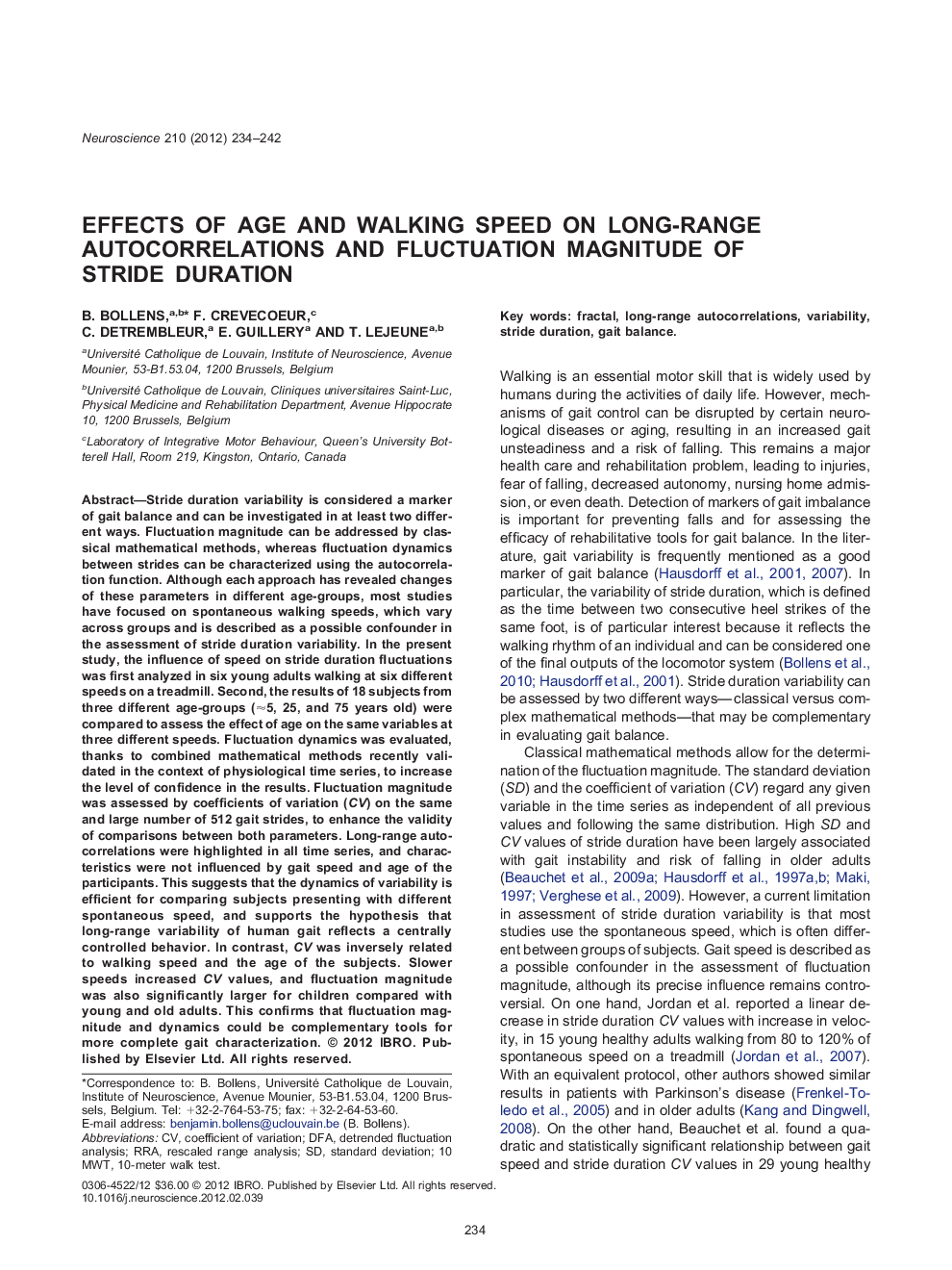| کد مقاله | کد نشریه | سال انتشار | مقاله انگلیسی | نسخه تمام متن |
|---|---|---|---|---|
| 4338367 | 1614866 | 2012 | 9 صفحه PDF | دانلود رایگان |

Stride duration variability is considered a marker of gait balance and can be investigated in at least two different ways. Fluctuation magnitude can be addressed by classical mathematical methods, whereas fluctuation dynamics between strides can be characterized using the autocorrelation function. Although each approach has revealed changes of these parameters in different age-groups, most studies have focused on spontaneous walking speeds, which vary across groups and is described as a possible confounder in the assessment of stride duration variability. In the present study, the influence of speed on stride duration fluctuations was first analyzed in six young adults walking at six different speeds on a treadmill. Second, the results of 18 subjects from three different age-groups (≈5, 25, and 75 years old) were compared to assess the effect of age on the same variables at three different speeds. Fluctuation dynamics was evaluated, thanks to combined mathematical methods recently validated in the context of physiological time series, to increase the level of confidence in the results. Fluctuation magnitude was assessed by coefficients of variation (CV) on the same and large number of 512 gait strides, to enhance the validity of comparisons between both parameters. Long-range autocorrelations were highlighted in all time series, and characteristics were not influenced by gait speed and age of the participants. This suggests that the dynamics of variability is efficient for comparing subjects presenting with different spontaneous speed, and supports the hypothesis that long-range variability of human gait reflects a centrally controlled behavior. In contrast, CV was inversely related to walking speed and the age of the subjects. Slower speeds increased CV values, and fluctuation magnitude was also significantly larger for children compared with young and old adults. This confirms that fluctuation magnitude and dynamics could be complementary tools for more complete gait characterization.
Graphical Abstract
•
•
•
Figure optionsDownload high-quality image (120 K)Download as PowerPoint slideHighlights▶Long-range autocorrelations are invariant with gait speed and age of participants. ▶Coefficients of variation are inversely related to gait speed and age of subjects. ▶Dynamics of variability is efficient for comparing subjects at spontaneous speed. ▶Long-range variability of human gait reflects a centrally controlled behavior. ▶Magnitude and dynamics of stride duration fluctuations are complementary tools.
Journal: Neuroscience - Volume 210, 17 May 2012, Pages 234–242